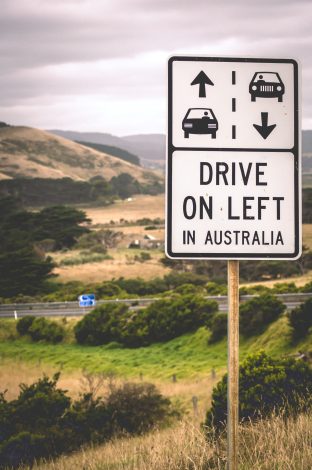Finding Work in Australia
There are a number of different avenues you may choose to go down when it comes to employment. Some people choose to take on several casual, part-time jobs while they move from one state to the next, exploring Australia before their Visa runs out. Others may have moved to Australia with full-time employment already set up.
Working in Australia shouldn’t be any different to working in Canada. Generally, working hours are the same, though your salary will depend on where in the country you’re located. In areas where the cost of living is higher, you will likely be paid a bigger salary.
Australia is very welcoming to backpackers, so if you’re looking for casual jobs, you’ll find plenty in the likes of Sydney, Melbourne, Perth, and anywhere else frequented by migrants with Working Holiday Visas. You can usually find casual jobs at farms or restaurants that will allow you to earn enough to get by while allowing you to enjoy plenty of spare time to get out and about.
Cost of Living
Australia’s cost of living is pretty high when you compare it to other countries in the world. Like in all countries, though, the cost of living varies massively from one city to the next – and actually, when you compare the stats in Australia and Canada, there really isn’t much difference between the two.
Statistics show that the average monthly salary in USD is $1000 more in Australia than it is in Canada. Basic utilities, such as heating and electricity, cost slightly more in Australia, and so does clothing. Real estate on average costs a whopping 74% more in Canada, but as we mentioned before, this exact figure entirely depends upon the city you’re looking to rent in.
Australia’s transport prices are slightly higher than in Canada, but restaurant prices and prices at markets are around about the same. Alcohol, coffee, and the cost to call someone in Australia are also virtually the same as they are in Canada.
Tax and SuperAnnuation
When you first arrive in Australia, before finding a job, it’s useful to file for a TFN number for paying your taxes. This can take up to three weeks to arrive by mail, though you don’t need to wait for its actual arrival before you can start working – you just need to apply for one.
It’s also mandatory in Australia to sign up to a SuperAnnuation fund, which, in most cases, will come straight off your wage. The SuperAnnuation (shortened by Aussies to Super), is Australia’s version of a pension, so if you don’t plan on staying in Australia until you retire, you can claim it back when you leave. Make sure to keep track of your paychecks so you know exactly how much Super you’re entitled to by the end of your working period.
Healthcare
Australia is a little different to Canada in its healthcare offering. Medical services aren’t technically “free” (i.e. paid for through taxes) like in Canada, and though Australia has an agreement with a number of countries to provide free healthcare, Canada isn’t one of them. This means you’ll need to take out the appropriate health insurance so that you’re covered if you fall ill or injure yourself while in Australia.
Driving

If you’re familiar with Canada’s roads, prepare to get used to driving on the left side in Australia. Before you consider purchasing a car, it’s wise to take public transport for a while just to familiarize yourself with being on what feels like the “wrong” side. This will help you to adjust – and prevent you from panicking – before you get behind the wheel yourself.
It’s easy to find a cheap car in Australia if you know where to look. Check out Facebook’s marketplace and for decent (but not amazing) cars that backpackers are looking to sell. If you just need something basic, you will more than likely find something on one of the two sites. Just make a the car is registered before parting with your money.
If you’re looking for a car that can get you around for several years, you might want to be more strategic with your search. Visit local dealers and garages and see what’s available for your budget. You may as well invest in something that’s guaranteed to last rather than saving on something you’ll need to pay to repair in the future.
Mobile communication
If you’re planning to use your phone in Australia, you will need to do one of two things to avoid an enormous phone bill at the end of each month: take out a new contract in Australia or purchase a sim card. Taking out a contract is a good idea if you plan to stay in Australia for several years, as you’ll be able to just pay it off monthly via direct debit as you probably did with your old phone back in Canada.
If you only plan to stay in Australia for up for a year, a sim card may be a better idea. Simply cancel your Canadian contract (or put it on hold if you can), then find your local Australian phone store and ask a member of staff about their sim deals. There are a number of deals available, but you will commonly pay for 6 months or a year’s use of your phone, including a certain amount of data, calls and texts per month. The best phone service for use in the outback is Telstra. It’s Australia’s most popular service, and it usually covers areas that other services don’t.












